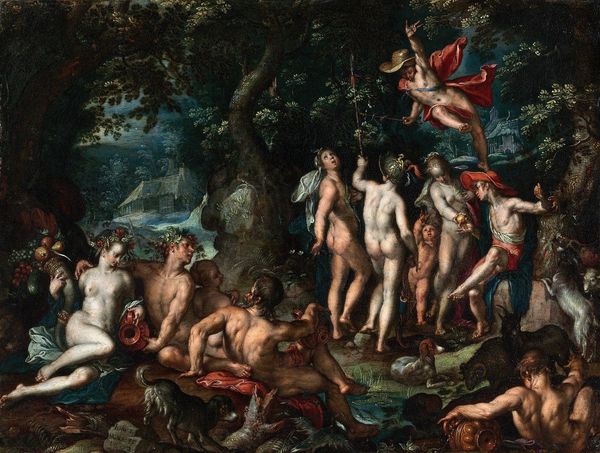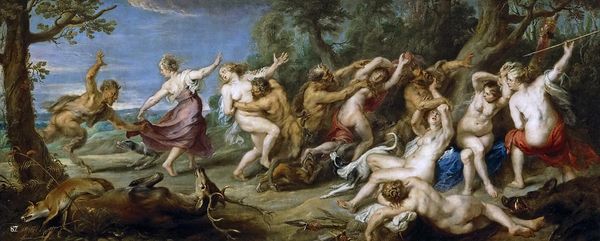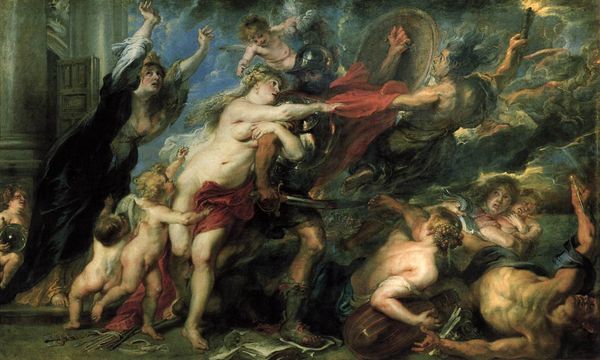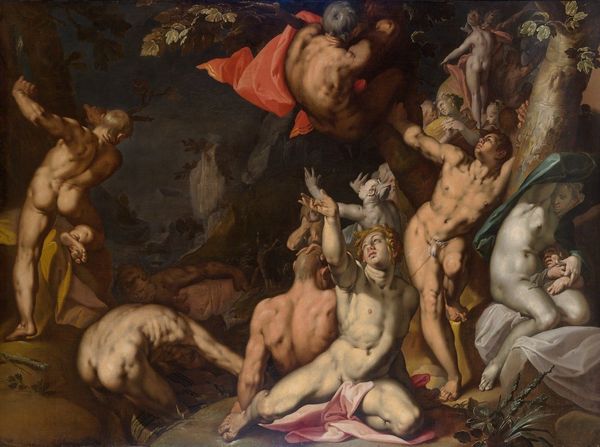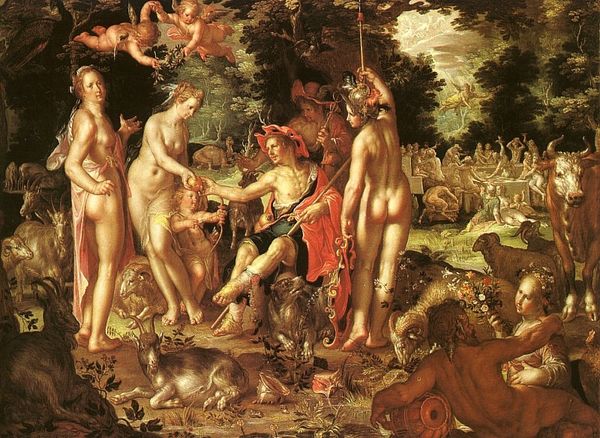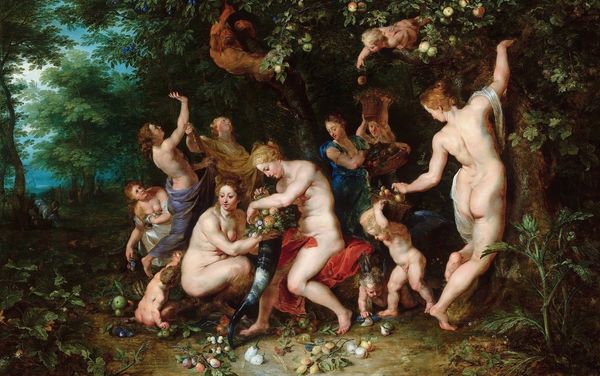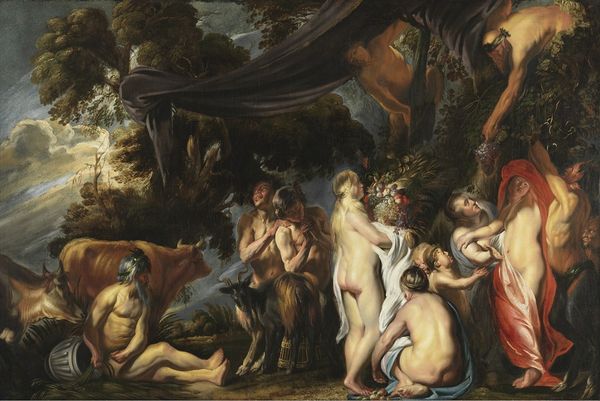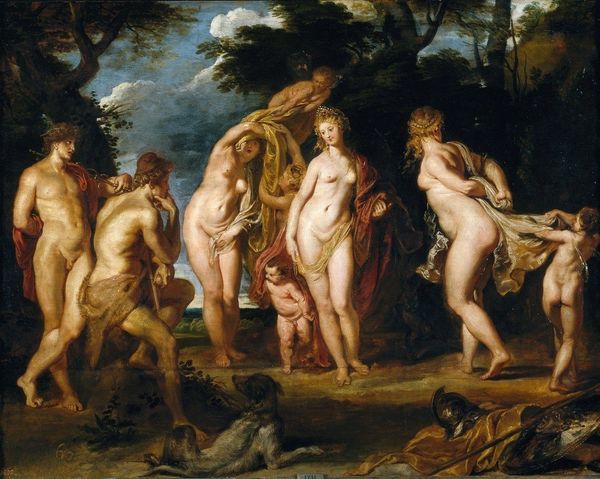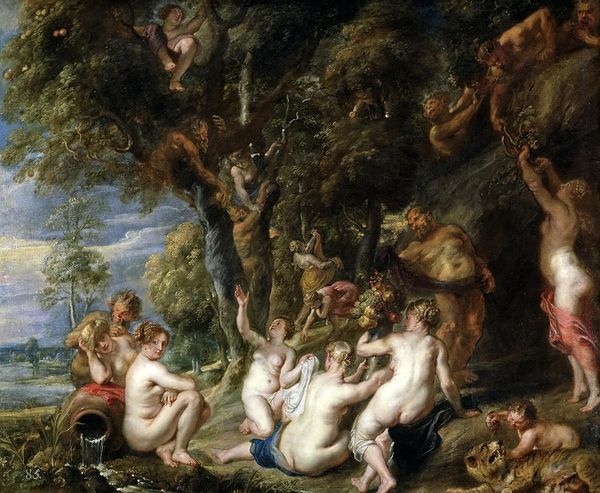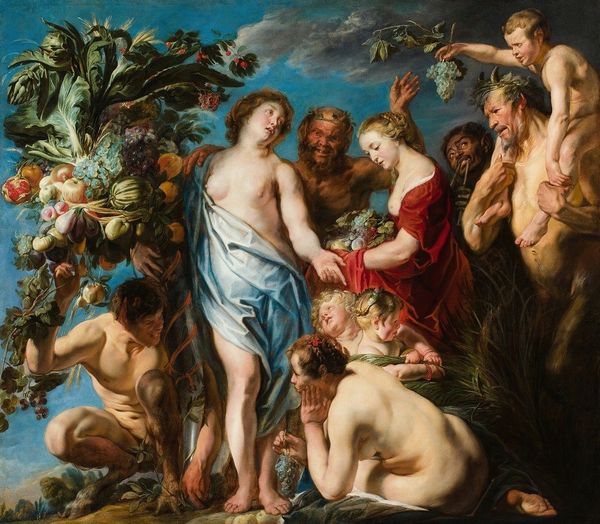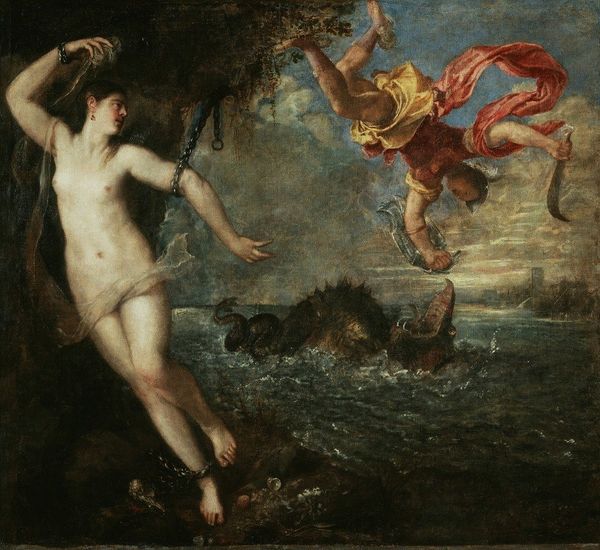
Copyright: Public Domain: Artvee
Editor: This is Hans Makart’s "Bacchus and Ariadne," painted between 1873 and 1874 using oil on canvas. There’s such a riotous energy to it! All those figures swirling around... it's a bit overwhelming, actually. How do you interpret this work? Curator: Overwhelming is a great word for it. Makart stages this bacchanal almost as a deliberate provocation. Think about the socio-political climate of late 19th century Vienna: a society grappling with rapid industrialization, rising social tensions, and anxieties around shifting gender roles. Editor: So the painting is a kind of... commentary? Curator: In a way, yes. Look at the sheer abandon depicted. It challenges the rigid morality of the time, offering a glimpse into ecstatic revelry, blurring lines of social decorum. It hints at a subconscious desire for freedom and release. Also, consider how the female body is portrayed here, liberated and active, yet still within a very male gaze. How does that make you feel? Editor: It’s... complicated. There’s freedom, but also objectification, isn’t there? The gaze feels very performative. It invites you in but simultaneously makes you a voyeur. Curator: Exactly. The painting exists within a nexus of conflicting ideologies. It represents both a desire for liberation and the constraints placed upon it. The rich color palette adds to the opulent feeling, masking and highlighting tensions in gendered/sexualized viewership. Editor: I see what you mean. So, beneath the surface of mythology and merriment, there's this really tense conversation happening about societal expectations and control? Curator: Precisely! Art gives voice to what culture usually conceals. It reveals fault lines and conflicting values. Editor: Wow, I'll definitely see this differently now. Thanks! Curator: My pleasure. Keep questioning!
Comments
No comments
Be the first to comment and join the conversation on the ultimate creative platform.
